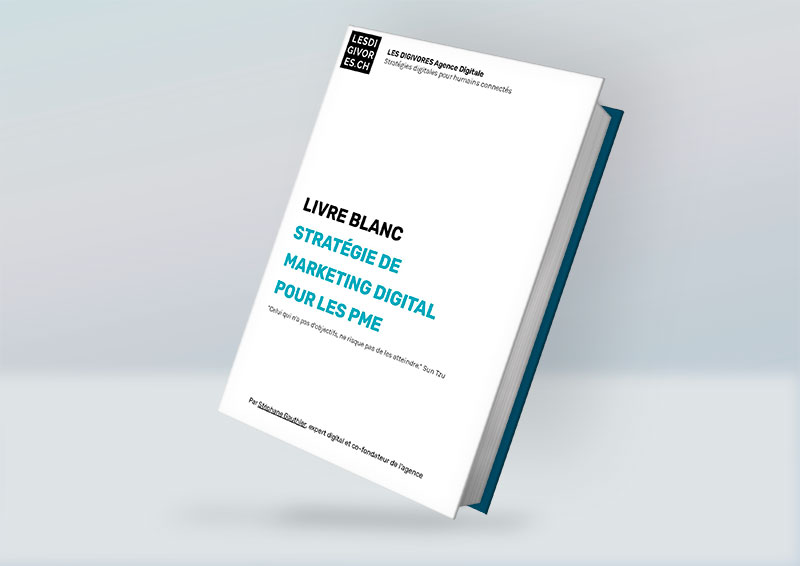Real-time marketing: How to succeed?

Real-time digital marketing is essential for brands.CRM This approach means reacting instantly to events and trends, enabling companies to stay relevant and effectively engage their audiences.
It offers great opportunities for creating attractive campaigns. However, it also presents unique challenges, such as the need to constantly monitor the digital landscape and react quickly.
In this article, we’ll explore effective techniques for taking advantage of real-time trends, highlight successful examples and examine the essential tools for monitoring and reacting to trends promptly. Whether you’re a marketing professional or an entrepreneur, this article provides information for navigating digital marketing in real time.
Capture trends in real time
Real-time marketing requires agility, vigilance and sophisticated tools to capture trends and react quickly. Here are some essential techniques for success.
1. Active social media monitoring
Social media are the heart of online news. Active monitoring is crucial.
- Use monitoring tools: Platforms like Hootsuite, Sprout Social and Brandwatch help track mentions, hashtags and discussions. These tools send instant alerts so you can react quickly.
- Analyze social data: Understand consumer preferences and behaviors. Use this information to adapt your messages and create relevant content.
2. Agile content creation
Reactivity is essential in real-time marketing. Teams need to be ready to create and publish quickly.
- Prepare content templates: Have templates ready for different scenarios (holidays, events, trends…). Customize them quickly when a trend emerges.
- Create agile creative teams: Build teams capable of producing high-quality visuals, videos and texts quickly. Close collaboration between marketing, design and communications is crucial.
3. Strategic partnerships
Influencers and content creators can amplify your message and react quickly to trends.
- Choose the right partners: Select influencers whose audience and style match your brand. Micro-influencers often offer high engagement rates.
- Build strong relationships: Cultivate ongoing relationships with creators for rapid collaboration on real-time marketing opportunities.
4. Use of real-time data
Real-time data is invaluable for adjusting your campaigns in line with consumer behavior.
- Leverage real-time analytics: Use Google Analytics, Adobe Analytics or CRM solutions to track user behavior on your site and applications. Adjust your advertising campaigns and content accordingly.
- Dynamic personalization: adapt content and offers to users’ actions in real time. For example, send a personalized offer to a user who abandons their shopping cart.
5. Live engagement
Live streaming sessions and interactive events enable immediate interaction with your audience.
- Organize live streaming sessions: Use Facebook Live, Instagram Live or YouTube Live to interact with your audience, answer their questions and gather instant feedback.
- Webinars and live Q&A: Offer webinars or Q&A sessions to address topical issues or specific trends. This strengthens engagement and positions your brand as a source of trust and expertise.
Examples of successful real-time marketing campaigns
When well executed, it can transform spontaneous events into powerful communication opportunities.
1. Oreo – “You can still dunk in the dark”
During the 2013 Super Bowl, a power failure plunged the stadium into darkness for 34 minutes. Oreo quickly responded with a simple but brilliant tweet: “You can still dunk in the dark”. Accompanied by an image of an Oreo in the shadows. The tweet went viral, garnering thousands of retweets and mentions. This campaign demonstrated the importance of reactivity and creativity in real time.
2. Always – #LikeAGirl
In 2014, Always launched the #LikeAGirl campaign to redefine what it means to do something “like a girl”. The campaign was launched with a video aired during the 2015 Super Bowl, capitalizing on a broader societal conversation about gender equality. The video went viral, accumulating millions of views and generating a global discussion on gender stereotypes. Always has succeeded in capturing an important social trend and integrating it perfectly into its brand.
3. Arby’s – Pharrell Williams hat
At the 2014 Grammy Awards, Pharrell Williams wore a distinctive hat that resembled the logo of the Arby’s restaurant chain. Arby’s a rapidement tweeté : « Hey @Pharrell, can we have our hat back ? #GRAMMYs ». This tweet generated a great deal of media attention and online interaction. Pharrell responded in a playful way, boosting Arby’s commitment and visibility.
4. Starbucks – Red Cup Controversy
Every year, Starbucks’ red Christmas cups generate online discussion. In 2015, a controversy erupted around the design of the cups. Starbucks responded with engaging posts on social networks, turning the controversy into an opportunity for dialogue with customers. The brand encouraged customers to share their own cup creations, generating strong participation and mitigating criticism.
5. ALS Ice Bucket Challenge
In 2014, the ice water bucket challenge became a viral phenomenon to raise awareness and funds for ALS (amyotrophic lateral sclerosis) research. Many celebrities and public figures took part and shared their videos online. The campaign raised over $115 million for the ALS Foundation. This challenge demonstrated the power of real-time participative campaigns and the impact of social mobilization.
Tools and technologies to monitor and react to trends
To succeed, brands need the right tools and technologies to monitor trends and react quickly.
1. Social media monitoring tools
They are a valuable source of real-time data on online trends and conversations. Here are some of the most popular tools used:
- Hootsuite: A social network management tool that monitors brand mentions, hashtags and relevant discussions on different platforms.
- Sprout Social: A social engagement platform offering advanced social media monitoring, analysis and real-time reporting capabilities.
- Brandwatch: A social listening solution that tracks online conversations, analyzes sentiment and trends, and uncovers valuable insights for real-time marketing.
2. Real-time data analysis tools
To understand consumer behavior and adjust marketing campaigns accordingly. Here are some of the most frequently used tools:
- Google Analytics Real-Time: Provides real-time data on website traffic, conversions and user behavior, enabling marketers to make informed decisions.
- Adobe Analytics: An advanced analytics solution that delivers real-time insights into user behavior on websites, mobile apps and other digital channels.
- Mixpanel: A behavioral analysis platform that tracks and analyzes user behavior in real time, facilitating the personalization of experiences and the optimization of marketing campaigns.
3. Watch and monitoring tools
In addition to social media and website data, other online data sources can also be monitored. Here are a few examples:
- Google Trends: Provides real-time data on search trends, enabling marketers to discover popular topics and integrate them into their campaigns.
- Talkwalker: A social media monitoring platform that tracks brand mentions, emerging trends and relevant online conversations.
- BuzzSumo: A tool for discovering the most shared content on social media, offering insights into trending topics and trends.
Conclusion
Real-time marketing offers brands a unique opportunity to engage with their audience in an immediate and relevant way. By actively monitoring trends, reacting quickly and using the right tools and technologies, we can create impactful campaigns that capture attention and generate high levels of engagement.
To make the most of it, here are a few tips:
- Stay on top of trends: The key is to be constantly on the lookout for emerging trends. Use social media monitoring tools and real-time analytics to stay on top of what’s happening in your industry.
- Be reactive, but thoughtful: Reactivity is important in real-time marketing, but it’s just as crucial to take the time to think through your responses. Make sure your messages are aligned with your brand’s values and that they don’t risk provoking negative reactions.
- Practice creative agility: Real-time marketing demands creativity and agility. Prepare flexible content templates and build teams capable of rapidly producing high-quality content.
- Engage with your audience: Consumers appreciate brands that are authentic and interact with them in a meaningful way. Hold live Q&A sessions, respond to comments and messages, and show your audience that you’re listening.
By putting these tips into practice, and staying attuned to the needs and concerns of your audience, you can create real-time marketing campaigns that capture attention, build brand awareness and boost customer loyalty.





